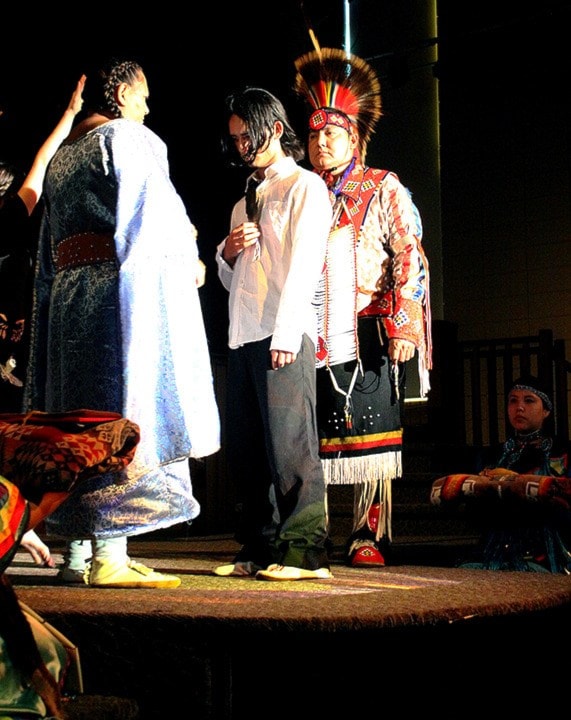First Nations storytelling and dance have a lot in common, all of which was on display in a play designed to explain the journey of one child who survived his time in the residential school system.
Called New Blood, the play was created by a dance teacher at Strathmore High School a couple of years ago - a result of Deanne Bertsch spending time at the nearby Siksika First Nation and as a way of getting more involved with the Blackfoot students at the school. The play was staged at the Ponoka United Church on Saturday, June 25 and sponsored by Ponoka Family Community and Support Services (FCSS).
The act brings together the school’s dance and glee classes with the students from the Siksika First Nation that attend along with some drummers and dancers from the First Nation.
It was inspired by the life of Siksika Chief Vincent Yellow Old Woman’s life and experience as a child in the residential school system - which desecrated many First Nations children by taking them away from their families and their heritage. It also pictured how he reclaimed his way of life and became chief.
FCSS executive director Shannon Boyce-Campbell explained there were a number of reason behind bringing such a play to Ponoka.
“First of all, it was a unique way to recognize National Aboriginal Day that took place on Tuesday, June 21,” she said.
“It was also shown through some asset mapping that was done a few years ago that youth here wanted more opportunity to be involved in the arts scene and this was a great way to promote that, especially with the population we serve.”
Boyce-Campbell added it was interesting to see the reaction of the audience to the journey taken by the young First Nation boy, the emotions and what was learned and shared through the play.
“At its best, the story showed in a non-judgmental way what went on in residential schools in hopes of getting people talking and understanding what went on so we can do better together,” she stated.
